After the French SAR request was issued last week, we are received enquiries and discussions from various parties. BTL also contacted a French laboratory on Monday to discuss and will explain your questions.
French SAR Requirements for Wireless Products
-----------
Q1. Regarding the second type of products in the article, if the power is less than 20mW, there is no need to test SAR. Does it belong to comply with the new system requirements?
Ans: In terms of technical definition, the power of this type of product can reach 20mW, but when the product is actually shipped, the actual power used is less than 20mW, it is not subject to the new regulations.
However, when the actual use exceeds 20mW, it still needs to follow the new regulations.
However, in the second category of products defined, in the past testing experience of BTL, the following products often exceed the 20mW limit:
• wifi tablet;
• Radio controls for drones or for modeling;
• wifi laptop;
-----------
Q2. How do I evaluate SAR for these second products exceeding 20mW?
Ans:
a. Please remember that the Body SAR Limit is 10g SAR test result should be less than 2.0 mW / g; the test distance is 5mm or 0mm / Limbe SAR Limit is 10g SAR test result is less than 4.0 mW / g; the test distance is 0mm.
Tablets that support WiFi will follow the test requirements of EN 62209-2. They will test the 4 edges and back of the product. The test distance will follow the 5mm test distance in EN 50566 for the Body SAR test.
However, if the product is 0mm, the Body SAR test can be directly passed. Under this condition, BTL will recommend to test directly at 0mm, so that the Body SAR / Limbe SAR are under the same test conditions and can be presented together.
Conversely, if the 0mm test for Body SAR does not pass, then the body SAR test 5mm / Limbe SAR test 0mm is required to present the SAR values of the two scenarios.
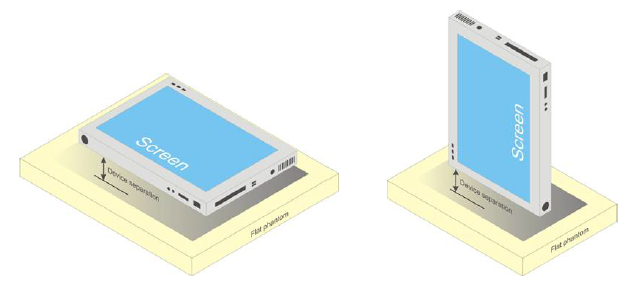
b. WiFi notebook computer, in accordance with EN 62209-2 test requirements, will turn on the computer 90 degrees, the bottom of the keyboard 0cm contact Phantom to test Body SAR, and the back of the screen from Phantom 2.5cm to test Bystander SAR (Note 1).
The 0cm contact with the Phantom at the bottom of the keyboard for testing is already equal to the so-called Limbe SAR test requirements. It is the same test scenario without additional testing. The manual can directly display Body / Limbe at the same time.
According to BTL's testing experience, WiFi laptops are almost not high and basically meet this requirement directly.
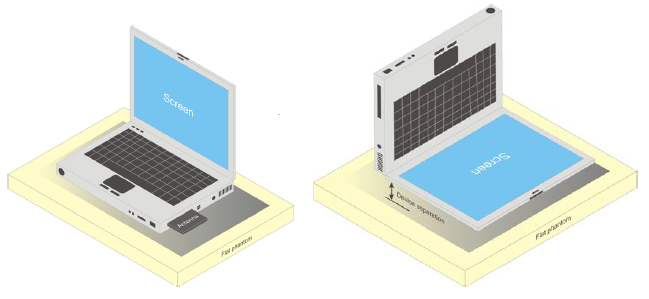
Note 1: For detailed description of Bystander SAR, please refer to the description of RED TGN 20 SAR Guidance Document. For actual test, you need to confirm the position of the antenna on the computer before making a decision.
c. Wireless remote controllers such as drones, etc., if the power is greater than 20mW, according to EN 62209-2 test requirements, it is considered as a generic device, which will evaluate the six sides of the product. 5mm requires testing, of course, if you can pass the Body SAR Limit requirement directly at 0mm, you only need to test 0mm.
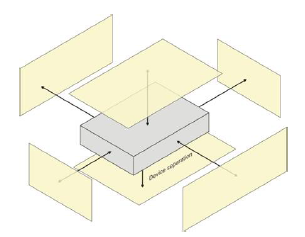
-----------
Q3. Do you want to evaluate the front of the WiFi laptop keyboard because your hands will be placed directly on it?
Ans: Not currently, because this test evaluation is not required in the regulations, and the existing RED TGN 20 SAR Guidance Document does not require this test.
-----------
Q4. What are the test scenarios for Head / Body / Limbe?
Ans: Test scenarios for laptops, tablets, and wireless remote controls are described in Q2. Here we will explain mobile phone products.
a. The head SAR test follows En 62209-1 and En 50360. The left and right ears are tested for Cheek and 15 degrees (Tilted), respectively.
Cheek Mode
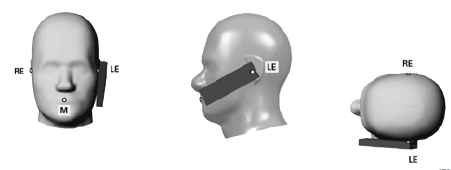
Tilted Mode
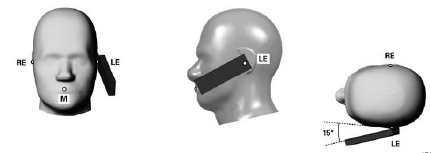
b. The Body / Limbe SAR test follows En 62209-1 and En 50360, and according to the requirements in En 50360, the Body SAR test distance is 5mm. The Limbe SAR test distance is 0mm.
For general CE testing, if the product does not enter France or is used for transfer of certification, only the front and back can be tested.
However, when the product enters France, it is recommended to test the front and back sides plus four edges for a complete test evaluation.
BTL currently recommends that as long as the product is sold in Europe, the Body SAR section is tested on 6 sides.
Then for the Limbe SAR part, the BTL suggestion is to test the 0mm of 6 faces and perform a complete evaluation test to find out the exact state of the highest SAR value.
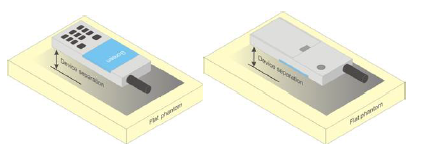
The Limbe SAR test follows En 62209-1 and En 50360, and the test distance is 0mm.
For general CE testing, if the product does not enter France or is used for transfer of certification, only the front and back can be tested.
However, when the product enters France, it is recommended to test the front and back sides plus four edges for a complete test evaluation.
BTL currently recommends that, as long as the product is sold in Europe, the Body SAR 5mm part is tested on 6 faces, and the Limbe SAR 0mm 6 face test is performed simultaneously.